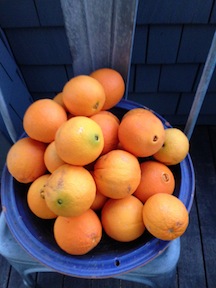Propagating Plants
*I recommend that all bachelors have a garden. It will give them the experience of being a...
Read Moreby VoiceAmerica | Oct 3, 2021 | Empowerment | 0 |
*I recommend that all bachelors have a garden. It will give them the experience of being a...
Read Moreby VoiceAmerica | Sep 17, 2021 | Empowerment | 0 |
“Tickle it with a hoe and it will laugh into a harvest.” English Saying Every September I...
Read Moreby VoiceAmerica | Sep 2, 2020 | Empowerment | 0 |
“When the ancients first observed Sirius emerging as it were from the sun…they believed its power...
Read Moreby VoiceAmerica | Nov 21, 2016 | Empowerment | 0 |
âGratitude is the fairest blossom which springs from the soul.â Henry Ward Beecher Are...
Read Moreby VoiceAmerica | Nov 4, 2016 | Empowerment | 0 |
âI feel like a warm, red autumn!â Marilyn Monroe My favorite part of a November autumn is...
Read Moreby VoiceAmerica | Oct 21, 2016 | Empowerment | 0 |
âTickle it with a hoe and it will laugh into a harvest.â English Saying October...
Read Moreby VoiceAmerica | Oct 6, 2016 | Empowerment | 0 |
âWho looks outside, dreams. Who looks inside, awakens.â ~ Carl Jung We celebrate joyous...
Read Moreby VoiceAmerica | Sep 21, 2016 | Empowerment | 0 |
Autumn is the hush before winter. ~French Proverb Having spent autumns in France, I attribute a...
Read Moreby VoiceAmerica | Nov 20, 2015 | Empowerment, Variety | 0 |
By Cynthia Brian âThe small but intense pleasure of walking through dry leaves and kicking them...
Read Moreby VoiceAmerica | Feb 4, 2014 | Empowerment, VoiceAmerica | 0 |
âTo me every hour of the day and night is an unspeakably perfect miracle.â       ...
Read More







